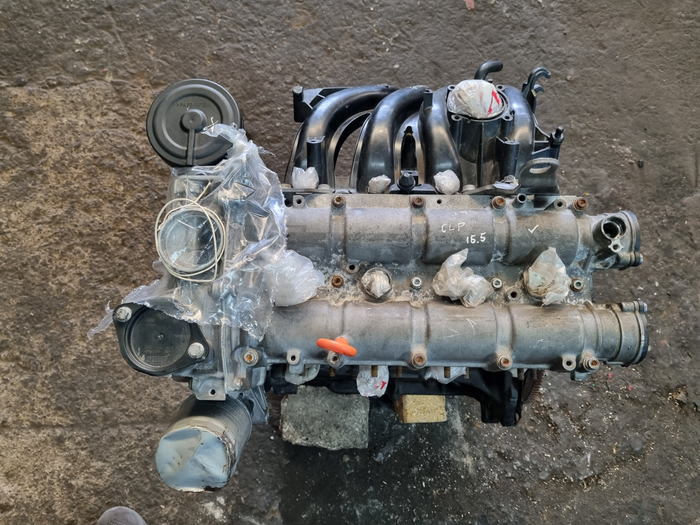Lower maintenance costs with a well-built clp engine.
Lower maintenance costs with a well-built clp engine.
Blog Article
Exactly How a Clp Engine Can Boost Effectiveness in Various Industries
The advent of CLP engines notes a significant change in operational performance across numerous industries, driven by their ability to maximize fuel usage and minimize downtime. Industries such as production and logistics stand to gain significantly from their robust style and regular power result, which promise to enhance operations and improve efficiency. As organizations significantly prioritize sustainability alongside efficiency, the duty of CLP engines becomes also extra essential. What remains to be seen is exactly how these advancements will form the future landscape of industrial operations and their effect on broader economic patterns (clp engine).
Summary of CLP Engines
CLP engines, or Continual Fluid Propellant engines, represent a substantial innovation in propulsion modern technology, specifically for area applications. These engines utilize a constant feed system that enables the continual expulsion of propellant, causing improved efficiency and efficiency compared to traditional strong or hybrid propulsion systems. By maintaining a continuous flow of liquid propellant, CLP engines can achieve extra exact thrust control, which is essential for maneuvering spacecraft in numerous objective circumstances.
The style of CLP engines integrates innovative materials and innovative fuel administration systems. clp engine. This leads to reduced weight and raised dependability, essential variables for long-duration area goals. The continuous procedure minimizes the threat of combustion instability, a typical difficulty in standard rocket engines.

Advantages in Production
The production of Constant Liquid Propellant (CLP) engines presents several remarkable benefits that boost both efficiency and cost-effectiveness. One of the key advantages is the streamlined production process, which reduces the intricacy associated with typical propulsion systems. By making use of fluid propellant, makers can accomplish greater accuracy in engine efficiency, causing enhanced energy output and minimized waste.
Furthermore, CLP engines facilitate a greater level of modularity, enabling simpler assimilation into different manufacturing lines. This flexibility can significantly decrease lead times and boost general operational adaptability. Making use of CLP technology additionally often tends to reduce the need for considerable maintenance due to less moving components, which translates right into decreased downtime and operational prices.

Applications in Logistics
Leveraging Constant Liquid Propellant (CLP) engines in logistics uses substantial benefits in functional performance and integrity. These engines give a durable remedy for numerous transport demands, making it possible for the smooth activity of items throughout huge ranges. The intrinsic style of CLP engines enables for consistent power output, which go now translates into smoother and a lot more predictable transportation schedules.
Among the vital applications of CLP engines in logistics remains in heavy-duty freight transportation, where they can drive both ground and airborne automobiles. Their ability to keep high efficiency under varying load problems makes certain that distribution timelines are satisfied, thus enhancing consumer complete satisfaction. Additionally, CLP engines can be incorporated right into automated logistics systems, assisting in real-time tracking and maximizing course planning.
Moreover, the resilience of CLP engines lowers upkeep downtime, permitting logistics business to maximize their functional capabilities. This is specifically helpful in warehousing operations, where efficiency in managing and carrying goods is important. As logistics proceeds to advance, the integration of CLP engines represents a forward-thinking strategy that not only improves efficiency but likewise sustains the market's growing needs for dependability and rate.
Effect On Power Efficiency
Exactly How do Continuous Liquid Propellant (CLP) engines boost energy effectiveness in transportation? CLP engines make use of a constant circulation of liquid fuel, maximizing burning processes and keeping a secure thrust outcome. This layout minimizes power losses linked with conventional burning engines, where gas delivery can vary and cause inefficiencies.
The constant procedure of CLP engines permits for an extra efficient thermal cycle, leading to greater details impulse contrasted to conventional engines. clp engine. This equates to minimized gas consumption for the same amount of job done, considerably decreasing operational expenses throughout numerous transport fields, consisting of air travel and maritime markets
Additionally, the capacity Discover More Here of CLP engines to maintain optimal performance under varying load conditions reduces the need for frequent acceleration and deceleration, even more boosting gas performance. Boosted power performance not just adds to set you back financial savings however likewise causes decrease greenhouse gas emissions, aligning with global sustainability goals.
Future Trends and Innovations
Arising advancements in Continual Fluid Propellant (CLP) engine modern technology pledge to reinvent the landscape of transportation effectiveness and sustainability. As markets pivot toward greener alternatives, CLP engines stand at the forefront, incorporating cutting-edge products and design approaches that enhance efficiency while lessening environmental influence.
Among the most promising fads is the fostering of hybrid systems that incorporate CLP engines with renewable resource sources. This harmony can enhance gas usage and minimize discharges, straightening with global sustainability objectives. Additionally, improvements in computational fluid characteristics (CFD) are assisting in the design of even more aerodynamically reliable engines, leading to reduced drag and boosted fuel performance.
In addition, the advancement of clever tracking systems is established to enhance functional efficiencies. These systems leverage information analytics and IoT technology to enhance engine efficiency in real-time, guaranteeing that the engines run within their most efficient specifications.
As study continues to discover alternative propellant formulas-- such as biofuels and artificial gas-- the future of CLP engines looks encouraging. By utilizing these advancements, industries can not only enhance their effectiveness but likewise add significantly to a cleaner, extra lasting future in transportation.
Final Thought
To conclude, CLP engines stand for a significant improvement in performance throughout multiple markets. Their capability to maximize gas usage and minimize functional prices, combined with a continuous feed system, improves power outcome and functional integrity. The assimilation of innovative materials and fewer relocating components decreases upkeep requirements, while alignment with sustainability goals positions CLP engines as a critical innovation for the future. Continued advancement click site in this field guarantees more improvements in efficiency and environmental efficiency.
Report this page